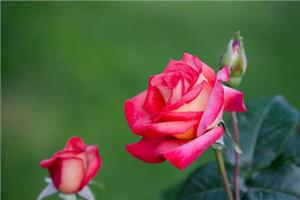What kind of green plant is most suitable for indoor breeding?
There are many kinds of pictures about green plants, such as green pineapple, orchid, aloe and so on. What kind of green plant is most suitable for indoor use? Of course, we need something that can prevent radiation and purify the air. The most important thing is that it is non-toxic and well decorated. Let's take a look at it together.
Green plant picture species
Common green plants that are beneficial to the human body include orchid, aloe, one-leaf orchid, tiger tail orchid, tortoise back bamboo and so on. What these plants have in common is that they are air scavengers and have a strong adsorption of indoor harmful gases. In particular, hanging orchid and tiger tail orchid, according to research, the adsorption rate of these two plants to indoor harmful gases can reach more than 80%.
But are all green plants like this? Are there any green plants that look fresh and lovely, but are actually not healthy to breed indoors? The answer is yes.
Evening primrose is an example. Some people may wonder why night incense, which is delightful because of its fragrance, is also harmful to the human body. In fact, the gas that smells good is a large amount of exhaust gas emitted by night-time incense after it stops photosynthesis, which is harmful to the human body. If night incense is often put indoors, it will cause dizziness, and even asthma and insomnia. Therefore, it is OK to put night incense indoors during the day, but in the evening, it should be moved outdoors, which is a way of breeding for human health.

It is not difficult to say, as we all know, some flowers can be raised simply with water, that is, hydroponic plants. These plants can live well as long as they are inserted in a bottle of water. Now we will introduce several kinds of green plants that can be cultured in water.
1. Peppermint, can make tea can cook, can clear the brain to remove fire.
After the mint grows tall, fold the stem down and insert it into water, and it will take root in about a week. Take a closer look, do you have white roots?
Look at the effect of inserting it in the bottle-the bottle is very simple and crude, it is left after using the hand sanitizer, brush it clean and use it.
two。 Phnom Penh hanging orchid is the most common indoor greening, which has a good effect on purifying the air.
After heading, the orchid will produce a lot of small buds, which will take root and grow slowly when they are inserted into the water. If you are worried about the poor cultivation of the soil, pull the orchid out of the basin and wash the mud from the roots and insert it into the water.
3. Fugui bamboo is also a plant with good hydroponic effect. These trees were picked up on the trash can. I don't know who raised them. They probably lost them impatiently without taking root. After picking them up and putting them in the bottle for half a month, they finally took root. Are they growing well now?
Cactus: with the role of absorbing electromagnetic radiation, placed in the home or office, can effectively reduce the electromagnetic radiation pollution caused by a variety of electrical and electronic products.
A leaf orchid: can clear most of the harmful substances in the air, especially has a strong ability to absorb formaldehyde: it has a strong function of absorbing toxic gases, and can absorb more than 80% of a variety of harmful gases, especially the strong ability to absorb formaldehyde. It can also greatly reduce the bacteria and microorganisms in the indoor air.
Tiger tail orchid: it can release negative ions, absorb a large number of reflective nuclides such as uranium, and remove formaldehyde, trichloroethylene, hydrogen sulfide, benzene, phenol, hydrogen fluoride and ether, as well as heavy metal particles.
Milan: it can absorb toxic gases such as sulfur dioxide, carbon monoxide and nitrogen peroxide emitted by household electrical appliances and plastic products, as well as volatile gases such as formaldehyde and benzene.
After the plant is transformed from terrestrial form to water culture. Although there are some common breeding essentials, they are not all the same from now on. For example, a plant that likes a dry environment cannot spray water on its leaves every day after being cultivated by water. Because its ecological habits have not changed. Therefore, we still have to follow its inherent ecological habits when breeding.
If you want to know more about it, you can continue to follow the No.1 Home Network.
Related
- Wuhan Hospital Iron Tree Blooming Result Was Instantly Frightened by the Gardener Master
- Which variety of camellia is the most fragrant and best? Which one do you like best?
- What is the small blue coat, the breeding methods and matters needing attention of the succulent plant
- Dormancy time and maintenance management of succulent plants during dormancy
- Minas succulent how to raise, Minas succulent plant pictures
- What are the varieties of winter succulent plants
- How to raise succulent plants in twelve rolls? let's take a look at some experience of breeding twelve rolls.
- Attention should be paid to water control for succulent plants during dormant period (winter and summer)
- Watering experience of twelve rolls of succulent plants
- Techniques for fertilizing succulent plants. An article will let you know how to fertilize succulent plants.



